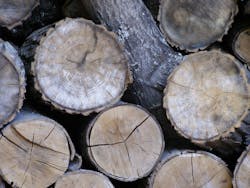EPA Revises Regulations for Storm Water Discharges From Logging Facilities
The U.S. Environmental Agency (EPA) has revised its Phase I storm water regulations to clarify that a National Pollutant Discharge Elimination System (NPDES) permit is not required for storm water discharges from logging roads. EPA is taking this action in response to Northwest Environmental Defense Center v. Brown (NEDC), 640 F.3d 1063 (9th Cir. 2011), a citizen suit was filed alleging violations of the Clean Water Act for discharging storm water from ditches alongside two logging roads in state forests without a permit. The court held that because the storm water runoff from the two roads in question is collected by and then discharged from a system of ditches, culverts and channels, it is a point source discharge of industrial storm water for which an NPDES permit is required.
The EPA did not intend for logging roads to be regulated as industrial facilities. However, in light of NEDC, the EPA has revised 40 CFR 122.26(b)(14) to clarify the Agency’s intent.
The EPA believes that storm water discharges from forest roads, including logging roads, should be evaluated under section 402(p)(6) of the Clean Water Act because the section allows for a broad range of flexible approaches that are better suited to address the complexity of forest road ownership, management, and use.
The EPA has added language to existing storm water regulations to clarify that, for the purposes of assessing whether storm water discharges are “associated with industrial activity,” the only facilities under Standard Industrial Code (SIC) code 2411 that are “industrial” are: rock crushing, gravel washing, log sorting and log storage.
The EPA published a proposal in the Federal Register on this revision on Sept. 4, 2012, and has considered all public comments received before taking final action.
Click here for more information.
Source: U.S. EPA


